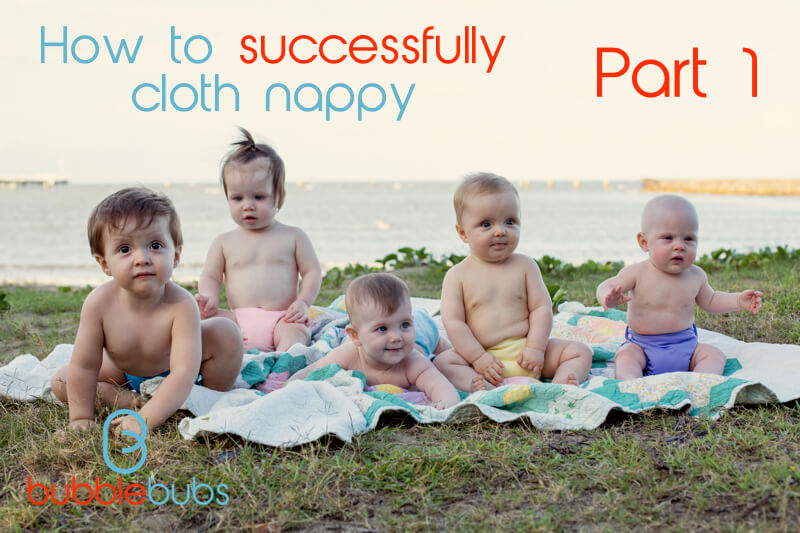
How to cloth nappy successfully - Part 1 Basics
Welcome to a five-part series on how to cloth successfully. The key to doing anything successfully is being well informed so you’re in the right place!
- We’re going to go through the basics of a modern cloth nappy. (What is it? What is it made from? What the heck is an AI2?)
- Accessories! (Who doesn’t love a good accessory? And with modern cloth nappies you can indulge in all or be a total minimalist, your choice!)
- Actually getting started. It can be a bit scary but we’ll get you started with an easy action plan (Hint: Stop putting so much pressure on yourself!)
- How to care for your cloth nappies.
- Troubleshooting - Fits and leaks (I know, not the most fun topic but like boy scouts say it’s best to be prepared)
To get started we’ll go over the basics of all the different types of cloth nappies you can use.

Two Parts
Let’s start with nappies that have two separate parts. An absorbent layer and a waterproof layer. These are trickier to master because you’ll need to learn how to fold them (really it’s not as scary as it looks!) but they are very flexible and usually the most cost-efficient option. In this category are three types: flats, prefolds and fitted nappies.
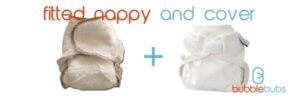
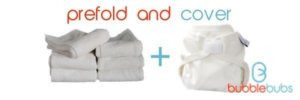

All in Twos
Then we have All In Twos (AI2) these come as two parts that go together to form one nappy. There are two basic types of AI2s, ones with snap-in inserts and pocket nappies (some nappies even come with both options). The great thing about snap-in designs (like our Candies) is that if the shell doesn’t get dirty you can just snap in a new insert and use it again! Pockets involve stuffing which people either love or loath BUT they are great for wiggly babies or unsure grandparents or other carers.
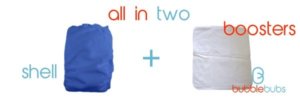
All in Ones
The simplest and closest thing to a disposable is an All In One (AIO). They are all one piece so you don’t have to match things u*p in the laundry and no one can get confused. The downside is depending on the structure (some have a tongue that comes out, some don’t) they can take longer to dry and they’re less flexible when it comes to adjusting absorbency.
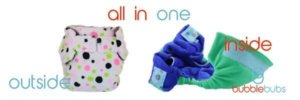
Sizes
Nappies also come in One Size Fits Most (OSFM) or sized nappies. OSFM are more economical because you can use the same set of nappies the whole time. Sized nappies are typically less bulky when they’re small and get a nice snug fit. Note: Lots of nappies will advertise birth till toilet training, this can be misleading as it’s often hard to get a good fit on a newborn but most will fit within a month or two.
Phew! Ok that’s the types, are we tired yet? Hold on because next up is fabrics!
Bamboo, cotton, hemp, microfibre, microfleece! What’s it all about?
It’s actually not terribly complicated. Bamboo, cotton and hemp are all natural fibres. They are extremely absorbent but on the downside can take a while to dry. They’re also great for children with sensitive skin, some babies do better with natural fibres against their skin. Natural fibres are also better for the environment.
Microfibre absorbs quickly (which is great if you have a baby that floods their nappy before the natural fibres have a chance to absorb). It also dries much quicker than natural fibres. The downside is it’s very prone to compression leaks (think sponge, it takes in a lot but if you squeeze it all comes back out). Also, microfibre should never be placed against baby's’ skin, it’s far too drying for their delicate little bottoms. However (just to be confusing) microfleece is a great fabric to use as a stay dry liner again bub, but liners are a whole different discussion for our next post on accessories.
So, sit back, have a cup of tea. It might be confusing at first but having options is great. That means everyone can find the exact fit for them, their baby and their family. See what might suit you best or give us a call on 1300 792 232 and we can work out the best system for you.
